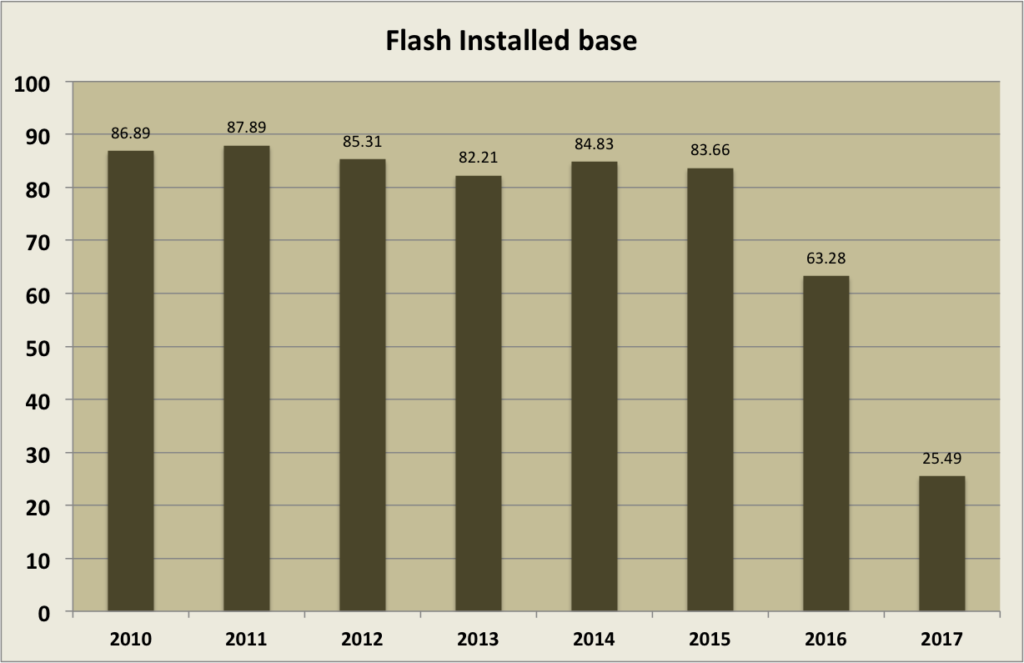Adobe just made the news by announcing that Flash plugin would loose support by 2020, effectively setting a deadline for all browsers to disable it definitely, and wiping it from the face of the Internet. Unfortunately, that’s simply the death certificate of something which happened long ago. People just forget to tell Adobe about it, and Adobe has since refused to bow to reality.
No one can tell exactly when Flash died, but the conclusion that it is dead is unavoidable. Just looking at today’s internet describes how low it has reached. As it is obvious on the chart below:

Until 2015 we see the that Adobe managed to maintain a minimum level of installed base, as measured by the number os visits to this site, always above the 80% level, which can be understood as “all flash sites works on every single PC”. Only on 2016 that figure started to drop, reaching 63%, and is currently at an all time low of 25%.
Those values hide another truth as how people access the internet. Up until 2016 most internet usage was done using a PC, but from 2016 that all changed: most internet usage is now done using a mobile device, a smartphone or a tablet. And here lies one of the problems: Flash either sucked or was simply not present on mobile devices.
Although Android had a flash implementation, it never effectively worked. Adobe never managed to adapt Flash from a point-and-click ecosystem, where power consumption was basically irrelevant, to touch screen, power constrained environment. That was correctly understood by Steve Jobs back in 2010, on its famous “Thoughts on Flash” letter to the internet.
Some didn’t realised, but that was the day Flash was sentenced to death, as it’s fate was inexorably set in stone with that letter. The future was clear by then: Apple already was on the path to dominate the smartphone, and smartphones were set to rule the internet. People just didn’t known when both would happen, but few people doubted if it would happen. On that letter Steve Jobs decried how bad had Flash became, and out of sync with how the internet was moving, and although he left some truths untold, it was the actual decision that set Flash’s face in stone: Apple would not support Flash on any of it’s iOS devices, effectively locking flash from having any grip on the mobile market.
People soon realised that websites would need to be redesigned. At the same time, HTML5 was gaining traction, and it solved the biggest problem Flash was used to solve: play videos. When Youtube, on January 28, 2015, set the HTML5 player as its default player, replacing Flash, it meant that the single biggest Flash usage ended that day. This was probably the day Flash died. it was a shame that Adobe took so long to realize it.
